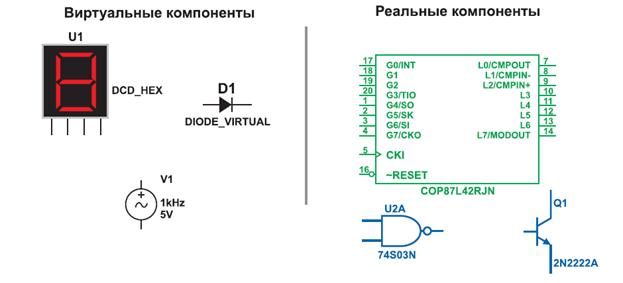7 Give the English equivalents to the following and use 5 of them in small situations:
часть конструкции; естественное основание; искусственное основание; вызывать неустойчивость и подвергать опасности жителей; собственный вес конструкции; рабочая/подвижная нагрузка; ветровая нагрузка; учитывать следующие условия; устойчивость грунта; уровень грунтовых вод; несущие стены; типы фундамента.
8 Which questions could you ask to get these answers?
1. Geotechnical engineering, being important in many branches such as military, mining, petroleum and in our case civil engineering, concerned with the engineering behavior of earth materials.
2. The capacity of soil to support the loads applied to the ground is called bearing capacity.
3. A shallow foundation is a type of foundation which transfers building loads to the earth very near the surface, rather than to a subsurface layer or a range of depths as does a deep foundation.
4. Piles should be placed on the center line of the walls that need support.
5. Pile foundations are used in the areas where the other kinds of foundations cannot be constructed.
9 Fill in the gaps with derivatives of the words in capitals:
TYPES OF FOUNDATION
Part I
The concrete strip foundations in Figure 8.3 are used most frequently. They consist of 1) _____ mass concrete strips poured in the bottom of trenches. These foundations will support load-bearing walls which are centered on the concrete strips to spread the 2) _____ from the walls, roofs and other floor loads evenly. The concrete strip is usually a uniform width and depth.
 Figure 8.3 Concrete Strip Foundation
The foundation must be wide and deep enough to avoid soil movement that could cause 3) _____. Depending on soil conditions, the maximum depth may be 900 mm. building regulations may suggest the 4) ____ minimum width for strip foundations. The concrete must be at least as thick as its projection from the base of the wall. This ensures that the pressures of the building loads are distributed in the concrete at an angle of 45°.
The deep strip foundation in Figure 8.4 is a 5) _____ of strip foundations. Deep strip foundations are usually dug out with a mechanical 6) _____, which cuts a narrow trench that is backfilled with concrete up to ground level. These foundations use more concrete, but reduce the cost of masonry walls and may remove the need for timber support for the trenches.
Figure 8.3 Concrete Strip Foundation
The foundation must be wide and deep enough to avoid soil movement that could cause 3) _____. Depending on soil conditions, the maximum depth may be 900 mm. building regulations may suggest the 4) ____ minimum width for strip foundations. The concrete must be at least as thick as its projection from the base of the wall. This ensures that the pressures of the building loads are distributed in the concrete at an angle of 45°.
The deep strip foundation in Figure 8.4 is a 5) _____ of strip foundations. Deep strip foundations are usually dug out with a mechanical 6) _____, which cuts a narrow trench that is backfilled with concrete up to ground level. These foundations use more concrete, but reduce the cost of masonry walls and may remove the need for timber support for the trenches.
 Figure 8.4 Deep Strip Foundation
Raft foundations are a good 7) _____ if the soil has a poor bearing capacity or if the building loads are quite small, because the cost of8) _____ separate foundations is eliminated. The oversite concrete slab that forms the ground floor of the building becomes the raft foundation (Figure 8.5.).
Figure 8.4 Deep Strip Foundation
Raft foundations are a good 7) _____ if the soil has a poor bearing capacity or if the building loads are quite small, because the cost of8) _____ separate foundations is eliminated. The oversite concrete slab that forms the ground floor of the building becomes the raft foundation (Figure 8.5.).
 Figure 8.5 Raft Foundation
The slab can be thickened at the edges with an edge beam and thickened underneath internal load bearing walls. Mesh 9) _____ increases the strength of the raft foundation and distributes the pressures of the building loads 10) _____.
Figure 8.5 Raft Foundation
The slab can be thickened at the edges with an edge beam and thickened underneath internal load bearing walls. Mesh 9) _____ increases the strength of the raft foundation and distributes the pressures of the building loads 10) _____.
| CONTINUE
PRESS
STABLE
SUIT
VARY
EXCAVATE
SOLVE
DIG
REINFORCE
EVEN
|
10 Use the words below to complete the sentences:

 Figure 8.3 Concrete Strip Foundation
The foundation must be wide and deep enough to avoid soil movement that could cause 3) _____. Depending on soil conditions, the maximum depth may be 900 mm. building regulations may suggest the 4) ____ minimum width for strip foundations. The concrete must be at least as thick as its projection from the base of the wall. This ensures that the pressures of the building loads are distributed in the concrete at an angle of 45°.
The deep strip foundation in Figure 8.4 is a 5) _____ of strip foundations. Deep strip foundations are usually dug out with a mechanical 6) _____, which cuts a narrow trench that is backfilled with concrete up to ground level. These foundations use more concrete, but reduce the cost of masonry walls and may remove the need for timber support for the trenches.
Figure 8.3 Concrete Strip Foundation
The foundation must be wide and deep enough to avoid soil movement that could cause 3) _____. Depending on soil conditions, the maximum depth may be 900 mm. building regulations may suggest the 4) ____ minimum width for strip foundations. The concrete must be at least as thick as its projection from the base of the wall. This ensures that the pressures of the building loads are distributed in the concrete at an angle of 45°.
The deep strip foundation in Figure 8.4 is a 5) _____ of strip foundations. Deep strip foundations are usually dug out with a mechanical 6) _____, which cuts a narrow trench that is backfilled with concrete up to ground level. These foundations use more concrete, but reduce the cost of masonry walls and may remove the need for timber support for the trenches.
 Figure 8.4 Deep Strip Foundation
Raft foundations are a good 7) _____ if the soil has a poor bearing capacity or if the building loads are quite small, because the cost of8) _____ separate foundations is eliminated. The oversite concrete slab that forms the ground floor of the building becomes the raft foundation (Figure 8.5.).
Figure 8.4 Deep Strip Foundation
Raft foundations are a good 7) _____ if the soil has a poor bearing capacity or if the building loads are quite small, because the cost of8) _____ separate foundations is eliminated. The oversite concrete slab that forms the ground floor of the building becomes the raft foundation (Figure 8.5.).
 Figure 8.5 Raft Foundation
The slab can be thickened at the edges with an edge beam and thickened underneath internal load bearing walls. Mesh 9) _____ increases the strength of the raft foundation and distributes the pressures of the building loads 10) _____.
Figure 8.5 Raft Foundation
The slab can be thickened at the edges with an edge beam and thickened underneath internal load bearing walls. Mesh 9) _____ increases the strength of the raft foundation and distributes the pressures of the building loads 10) _____.



